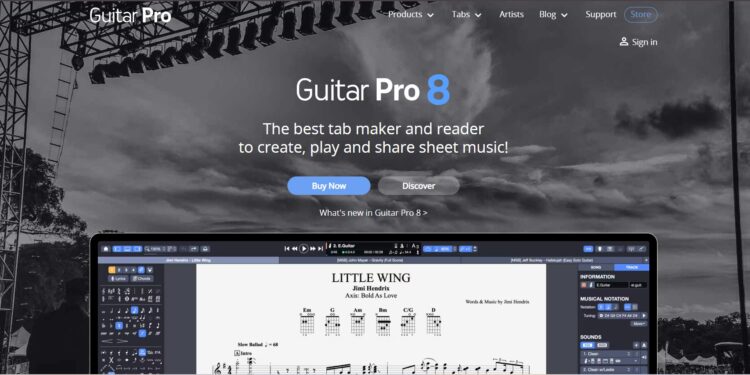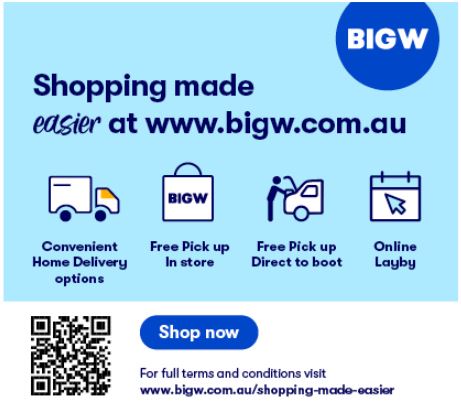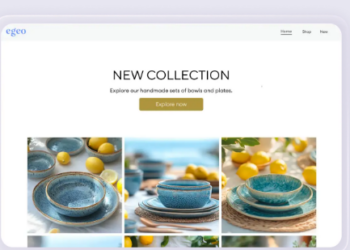Introduction to Tablature and its importance in music
If you’re a guitarist, bassist, or play any fretted instrument, you know the thrill of creating music. But how do you translate that passion into something tangible? Enter tablature—a powerful tool that simplifies the way we read and write music. Tablature (often called tab) is like a roadmap for your fingers on the fretboard. Whether you’re jamming with friends or writing your next hit song, having access to effective tablature can make all the difference.
Imagine being able to quickly jot down riffs, learn songs at lightning speed, or even craft unique compositions without needing extensive music theory knowledge. That’s where tablature editor software comes into play! With various options available in today’s digital age, finding one that suits your needs could enhance your musical journey tremendously. Dive in as we explore what makes these tools essential for musicians and uncover some of the best options on the market!
Music has a language of its own, and for many guitarists and bass players, that language is tablature. If you’ve ever tried to learn a new song or figure out a tricky riff, you know how essential it can be. Tablature breaks down music into simple visual representations of where fingers should go on the fretboard, making it accessible for musicians at any level.
Imagine strumming your favorite tune without needing to read complex sheet music. With tablature, that dream becomes reality. This method not only simplifies learning but also enhances creativity by allowing players to experiment with their unique styles while still following along with popular compositions.
With the right tools at your disposal—like an effective tablature editor software—you can transform your musical journey from daunting into delightful. Whether you’re crafting original pieces or sharing arrangements with fellow musicians, these editors provide invaluable support in bringing your ideas to life. So let’s dive deeper into the world of tablature and discover why having the best editing software matters for every fretted instrument player!
Features to look for in a tablature editor software
When choosing a tablature editor, consider user-friendliness. An intuitive interface helps you focus on creating music rather than figuring out how the software works.
Look for robust notation capabilities. The ability to add notes, rests, and various symbols makes your tabs more expressive.
A good editor should support multiple instruments too. Whether you play guitar, bass, or other fretted instruments, versatility enhances your creative options.
Compatibility with different file formats is essential as well. You want to import and export files easily across various platforms without hassle.
Check for built-in tools like metronomes or playback features. These can significantly enhance practice sessions by allowing real-time feedback while you play along with your tabs.

Top 5 tablature editor software options
When it comes to tablature editor software, a variety of options cater to different needs and preferences.
Guitar Pro is a top contender, known for its intuitive interface and extensive library of features. It’s perfect for both beginners and seasoned musicians.
TuxGuitar stands out as an excellent free alternative. It offers multi-track support, allowing users to create complex compositions without breaking the bank.
For those who prefer cloud functionality, MuseScore shines with its collaborative tools that let you share your work easily online.
Another noteworthy mention is Power Tab Editor which has been around for ages. Its simplicity makes it easy to pick up while still providing solid editing capabilities.
Noteflight deserves attention as an online-based option favored by educators and students alike due to its user-friendly design and accessibility from any device connected to the internet.
Comparison of key features and pricing
When choosing a tablature editor, key features and pricing can differ widely. Some software emphasizes simplicity, while others offer advanced tools for detailed compositions.
Look for intuitive interfaces that cater to beginners without sacrificing depth for experienced users. Features like real-time playback, customizable tunings, and chord diagrams can enhance the user experience.
Pricing varies significantly as well. Some programs operate on a subscription model with regular updates. Others might require a one-time purchase but may lack ongoing support or new features.
Free options exist too, though they often come with limitations in functionality or ad interruptions. It’s essential to evaluate what suits your needs best before making an investment. A balance of capabilities versus cost will help you find value in your choice.
When evaluating tablature editor software, it’s essential to consider the specific features that best suit your needs as a musician. Here’s a breakdown of some top options available today:
**Guitar Pro** stands out for its extensive library and professional-grade tools, ideal for both beginners and advanced players. It offers MIDI input capabilities and supports various instruments beyond guitar.
**TablEdit** is another favorite among musicians who appreciate its versatility. TablEdit allows you to create sheet music alongside tablature, making it suitable for those who play multiple instruments.
For budget-conscious users, **MuseScore** shines with its free model while providing powerful notation features. It’s community-driven and boasts an impressive range of plugins to enhance functionality.
If you’re looking for something straightforward without sacrificing quality, **Power Tab Editor** provides simplicity paired with robust tabbing capabilities. This option works well on older systems too.
Lastly, **Fretboard Legend**, designed specifically for mobile devices, combines learning with creation seamlessly. Users can practice scales and exercises while also composing their own pieces directly from their smartphones or tablets.
When assessing these programs, keep in mind pricing models vary significantly. Some offer one-time purchases while others operate on subscriptions or donations. Always check what’s included in each package—features like cloud storage or additional sounds might be game-changers depending on your workflow.
Choosing the right tablature editor ultimately depends on how you plan to use it in your musical journey. Each software has unique strengths catering to different types of musicians—from hobbyists wanting casual jam sessions to professionals seeking detailed compositions.
User reviews and ratings
User reviews and ratings are a treasure trove of insights when exploring tablature editor software. Musicians often share their experiences, highlighting what works well and what doesn’t.
Many users appreciate intuitive interfaces that simplify the learning curve. They frequently mention how easy it is to create tabs for both guitar and bass without getting lost in complicated menus.
On the flip side, some users express frustration with certain features that seem underdeveloped or buggy. These reviews can be invaluable for prospective buyers keen on avoiding software pitfalls.
Ratings often reflect not just functionality but also customer support experiences. Quick responses from developers make a significant difference for many musicians navigating new tools.
By paying attention to user feedback, you can uncover hidden gems or avoid potential disappointments in your search for the perfect tablature editor.
When it comes to choosing tablature editor software, user feedback plays a crucial role. Reviews often highlight the practical experiences of musicians at various skill levels.
Many users appreciate intuitive interfaces that make learning easier. A clean design helps newcomers navigate without feeling overwhelmed. Advanced users often look for customization options and flexibility in their editing process.
Ratings can vary widely among different platforms. Some programs receive high marks for features like MIDI support or integration with other music production tools, while others are valued for their simplicity and ease of use.
User forums are also great resources to gauge community sentiment about each software option. Engaging with fellow musicians provides insight into which programs stand out in terms of reliability and performance.
As you explore your choices, pay attention to these reviews and ratings; they can guide you towards a solution that meets your personal needs as a musician. Whether you’re aiming for professional compositions or casual jam sessions, there’s likely an editor that’s perfect for you.

Tips for using a tablature editor software effectively
Familiarize yourself with the interface first. Spend some time exploring menus and tools. Understanding where everything is will save you headaches later.
Next, use templates or existing tabs as a starting point. This can speed up your workflow and keep you inspired when you’re feeling stuck.
Don’t hesitate to utilize shortcuts. Most software offers keyboard commands that can significantly enhance your efficiency.
Make sure to regularly save your work. It’s easy to get lost in creativity, but losing progress due to an unforeseen glitch is frustrating.
Experiment with playback features. Hearing your tablature come to life helps identify mistakes and refine rhythm.
Take advantage of online communities for tips and feedback on your compositions. Engaging with fellow musicians provides fresh perspectives that can elevate your skills.
Conclusion and final recommendations
As you explore the world of tablature editor software, it’s important to find a tool that resonates with your needs and enhances your musical journey. The right software can simplify the process of writing, editing, and sharing music for guitar, bass, or any fretted instrument.
When choosing a program, consider features like ease of use, compatibility with different file formats, and additional tools such as playback options or chord libraries. Each option has its strengths and weaknesses.
The top five programs we discussed offer varying degrees of functionality at different price points. Whether you’re looking for something budget-friendly or more advanced with extensive features, there is an option out there tailored to you.
User reviews provide valuable insight into how each program performs in real-life situations. Pay attention to feedback regarding usability and customer support when making your choice.
To maximize your experience with tablature editors, take time to familiarize yourself with their unique interfaces. Experimenting with different features will help you become proficient quicker than you’d expect.
Selecting the right tablature editor can transform not only how you write music but also how much joy you derive from playing instruments. Embrace this technology as part of your creative toolkit and let it elevate your musical expressions.
















